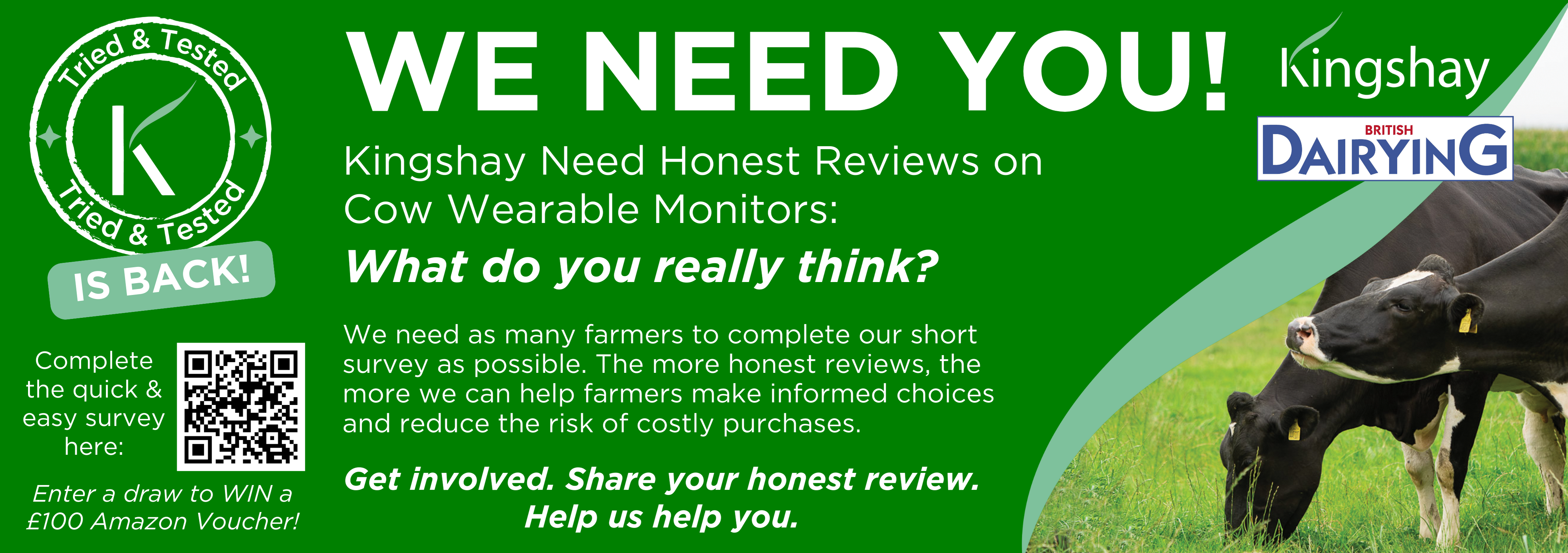Enclosed in your Mailing:
Spring Newsletter
- Success at Dairy-Tech 2025
- Dairy Manager Update
- In My Field – Endemic Livestock Diseases
- Good News for Fertility
- Kingshay News
- Recent Events
April Checklist
- Bluetongue Restricted Zone Pre-movement Testing
- Mastering Early Season Grazing
- The Payoff with Grazing
- Milk Prediction Forecasting
- Timely Tips
- Farm Focus
- key Dates & Grants
- Feed, Fuel and Milk Price Trends

Kingshay Still Need Your Help!
We need as many farmers to complete our short survey on cow wearable monitors. The more farmers who participate, the more accurate and comprehensive our reports will be. Your input is crucial. So help us help you and complete our short survey below.
If you’d prefer to fill out the form on paper, we attached a printed copy in your previous mailing, along with a pre-paid envelope.
If you’d prefer to fill out the survey online, please scan the QR code provided below.
Thank you.
Complete our quick & easy survey here:

Find us on Facebook: www.facebook.com/kingshayfarming
Follow us on Twitter: www.twitter.com/kingshayfarming
Contact us with any technical queries on contact.us@kingshay.co.uk or call 01458 851555


